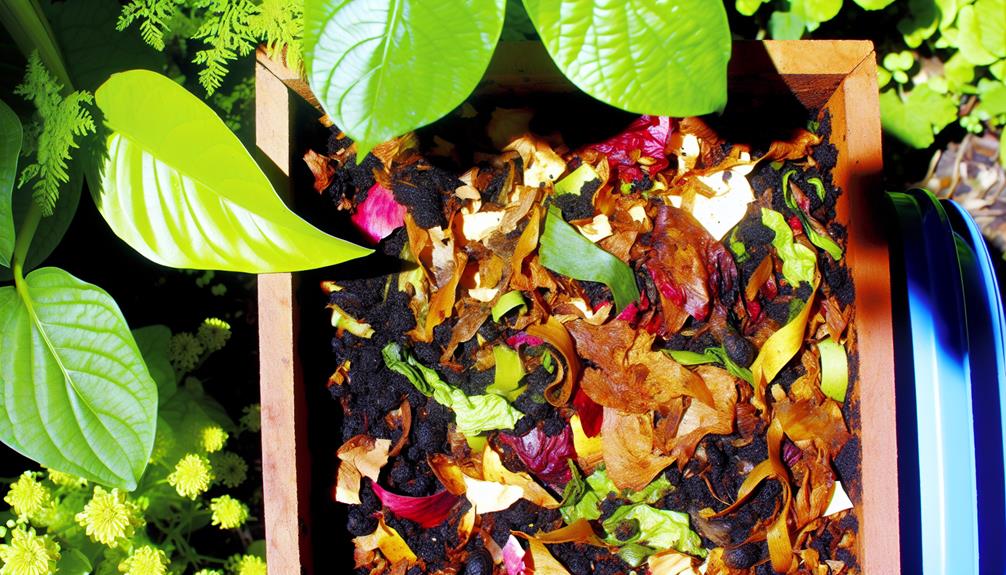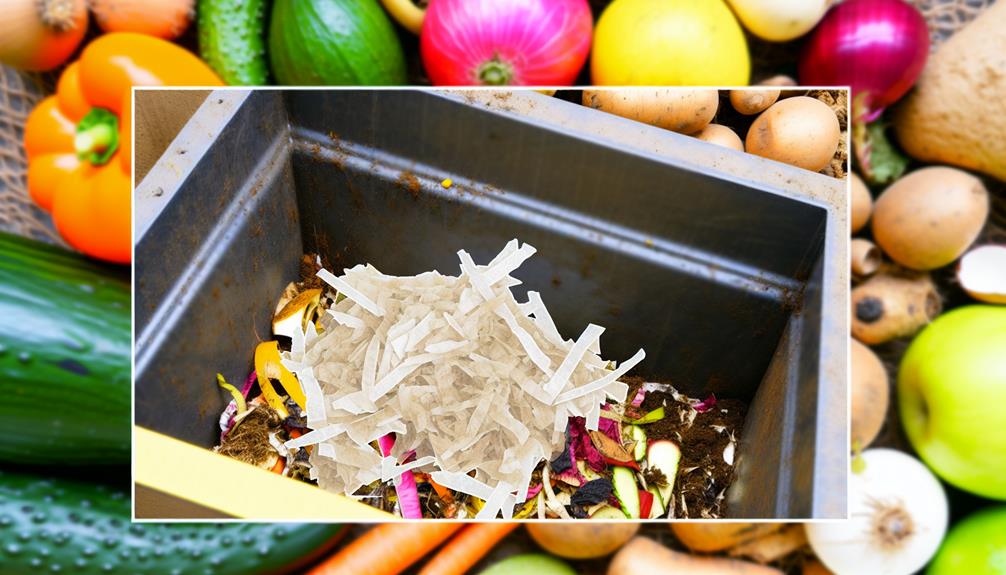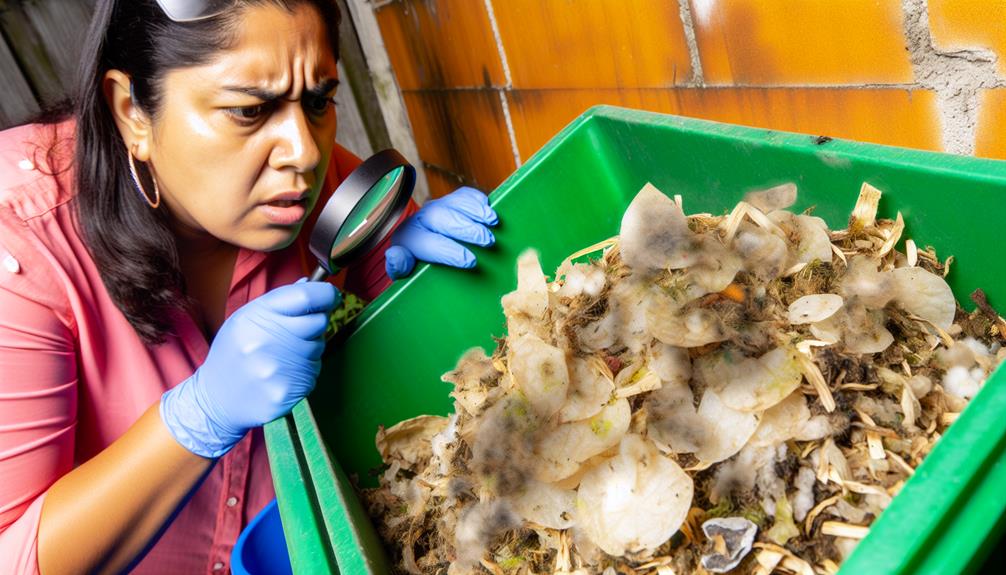

Yes, you can compost rice paper. Since it’s made from rice flour and water, it breaks down quickly and adds valuable nutrients to your compost. To compost rice paper effectively, cut or tear it into small pieces and mix it with other compostable materials like fruit scraps, vegetable peels, and garden trimmings.
Make sure your compost pile stays moist and aerated. Keep an eye out for any synthetic additives in the rice paper, as they can hinder decomposition. By composting rice paper, you reduce landfill waste and improve soil quality. Curious about more eco-friendly practices? Keep exploring the benefits.
Rice paper is a thin, edible material made primarily from rice flour and water. Its history origins can be traced back to ancient Asia, where it played a significant role in various cultures.
You might find it fascinating that rice paper, often used in traditional Asian cuisine, also holds a deep cultural significance. It’s not just a food item; it symbolizes community and shared experiences, often seen in dishes at festive gatherings and family meals.
Understanding rice paper’s cultural roots helps you appreciate its value beyond the kitchen. In Vietnam, for instance, rice paper is integral to making spring rolls, a dish that brings people together. In China, it’s used in art and calligraphy, demonstrating its versatility and importance.
Embracing rice paper in your culinary adventures connects you to these rich traditions. It’s more than a cooking ingredient; it becomes a way to participate in cultural heritage. By learning about and using rice paper, you’re joining a global community that values history and shared experiences.
Also Read: Can You Compost Ice Cream?
When considering the composition of rice paper, you’ll find it’s primarily made from rice flour and water, with some variations incorporating tapioca starch or other ingredients. This simple yet effective combination has been a staple for centuries, reflecting its historical usage in various cultures. The primary ingredients, rice flour and water, are often sourced with attention to ensure quality and sustainability, making rice paper not just a culinary delight but also an eco-friendly option.
You’ll appreciate knowing that ingredient sourcing plays an important role in the quality of rice paper. High-quality rice flour is essential, typically milled from non-GMO rice, ensuring a pure and consistent product. Tapioca starch, when used, adds a slight elasticity and smoothness, enhancing the texture. It’s fascinating to see how different cultures have adapted the basic recipe to their needs, sometimes adding salt or other natural preservatives.
In historical usage, rice paper has been more than just a food item. It has served various roles, from wrapping delicate foods to being used in art and writing, particularly in East Asian traditions. Understanding its composition helps you appreciate its versatility and the attention that goes into making it.
Also Read: Can You Compost Mail?
When you add rice paper to your compost, it breaks down relatively quickly due to its organic composition.

Pay attention to factors like moisture, temperature, and carbon-to-nitrogen ratio to make sure it decomposes efficiently.
This process not only reduces waste but also contributes valuable nutrients to your compost mix.
Understanding how rice paper breaks down in composting is essential for optimizing your composting process. Rice paper has a rich history, traditionally used in Asian cuisine for making spring rolls and as an edible wrapper. This background helps explain its composition, which is primarily rice starch and water, making it biodegradable and compost-friendly.
To effectively compost rice paper, follow these steps:
Rice paper contributes essential carbon to your compost, helping to balance the nitrogen from green materials. This balance is vital for maintaining an effective composting process. By adding rice paper, you’re providing a necessary carbon source that enhances the decomposition rate.
Microbial activity thrives on this carbon, breaking down materials more efficiently and helping produce richer compost.
When you incorporate rice paper into your compost, you’re also aiding the microbes that drive the decomposition process. These microorganisms need a balanced diet of carbon and nitrogen to function at their best. Too much nitrogen can lead to a smelly, anaerobic pile, but the carbon from rice paper helps prevent this by creating a more favorable environment for aerobic microbial activity.
To maximize the benefits, tear the rice paper into smaller pieces before adding it to your compost. This increases the surface area, allowing microbes to work more effectively, thereby speeding up the decomposition rate.
Also Read: Can You Compost Rust?
Composting rice paper offers several environmental benefits, making it a smart choice for eco-conscious individuals. Rice paper has a rich history, often used in rice paper art for centuries. By composting it, you’re not only honoring its historical significance but also contributing to a sustainable future.
Here are three benefits of composting rice paper:
To start composting rice paper, simply tear it into smaller pieces and mix it with your compost pile. Make sure it’s combined with other organic materials like vegetable scraps and leaves for effective decomposition.
Also Read: Can You Compost Carrot Peel?
While composting rice paper offers numerous benefits, it’s important to take into account some potential drawbacks. First, consider the environmental impact of the rice paper production process itself. Although rice paper is biodegradable, the cultivation and processing of rice can contribute to water consumption and greenhouse gas emissions. This might negate some benefits of composting if not managed sustainably.

Another aspect to think about is the disposal methods available to you. Not all composting systems handle rice paper efficiently, especially if the paper has been treated or coated with non-biodegradable substances. Always make sure your rice paper is free from synthetic additives before composting, as these can hinder decomposition and affect the quality of your compost.
Additionally, rice paper can attract pests if not composted correctly. It’s important to balance it with other compost materials to avoid creating an inviting environment for insects and rodents.
Lastly, while rice paper breaks down relatively quickly, it may still take longer to decompose than other organic materials, slowing down your composting process. Make sure to monitor your compost pile and adjust as necessary to maintain ideal conditions for decomposition.
Also Read: Can You Compost Cardboard Tubes?
To compost rice paper effectively, start by shredding it into small pieces to speed up decomposition.
Next, add the shredded rice paper to your compost pile, mixing it with other green and brown materials.
Make sure to maintain the correct balance of moisture and aeration to guarantee the rice paper breaks down properly.
Shredding rice paper into smaller pieces accelerates the composting process by increasing its surface area. When you break it down, you create more opportunities for microorganisms to do their work. This is especially important for materials like rice paper, which can take longer to decompose if left whole.
Before you toss your rice paper into the compost bin, consider these recycling methods and disposal options to optimize the process.
Here’s a simple guide to get you started:
Now that you’ve shredded the rice paper, it’s time to add it to your compost pile to start the decomposition process. Begin by mixing the shredded rice paper with other compost materials like fruit and vegetable scraps, coffee grounds, and garden trimmings. This blend guarantees a balanced compost, rich in both carbon and nitrogen.
When adding rice paper, spread it evenly throughout the pile to avoid clumping, which could slow down decomposition. Remember, maintaining the right moisture level is essential. Your compost pile should feel like a damp sponge, so if it’s too dry, add some water, and if it’s too wet, mix in more dry materials like leaves or cardboard.
As you incorporate rice paper into your compost, you’re opting for sustainable disposal methods over traditional recycling options. While rice paper can sometimes be recycled, composting is a more eco-friendly way to dispose of it, as it enriches your soil without contributing to landfill waste.
Turn your compost pile regularly to aerate it, promoting faster breakdown of materials.
Also Read: Can You Compost Cardboard Tubes?
Considering other methods for disposing of rice paper can help you reduce waste and make more sustainable choices. You might be surprised at the various recycling methods and disposal options available.

Here are a few alternatives to composting rice paper that you can easily incorporate into your routine:
Yes, rice paper can attract pests when composted. To guarantee pest prevention, use organic deterrents like citrus peels or coffee grounds. By doing this, you’ll maintain a healthy compost and feel part of an eco-friendly community.
Shredding rice paper isn’t necessary, but it offers shredding benefits like faster decomposition. For effective composting tips, shredding helps mix better with other materials, making you feel like a pro composter within your community.
You’re probably wondering about the decomposition time for rice paper in your compost pile. Typically, it takes about 4-6 weeks. Composting benefits include enriching your soil and reducing waste, making your garden thrive.
Yes, you can compost rice paper in a worm bin. It’s safe for worm health and helps maintain bedding balance. Just make sure it’s not too much, so your worm community thrives together harmoniously.
You’re curious if rice paper impacts your compost’s pH level. It doesn’t notably alter it. Instead, it contributes to the nutrient balance and supports microbial activity, fostering a thriving, balanced compost environment you can be proud of.
To sum up, you can compost rice paper effectively by tearing it into smaller pieces to speed up decomposition. Make sure it’s mixed well with other compostable materials for balance.
While it breaks down easily, be mindful of any coatings that might affect compost quality. If you encounter issues, consider alternative disposal methods like recycling if feasible.
Composting rice paper helps reduce waste, promoting an eco-friendly lifestyle.
